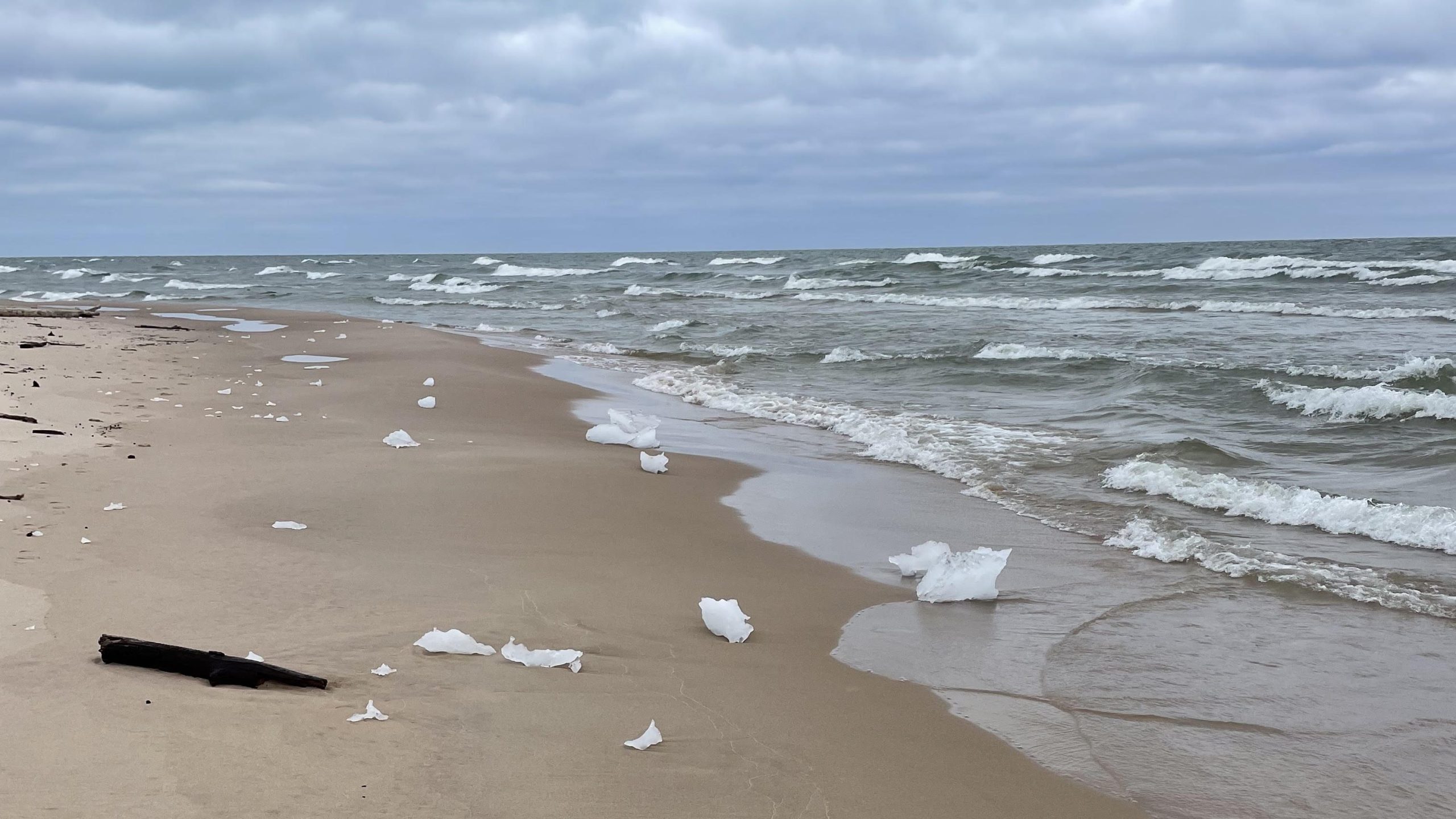By Katie Valentine
Each summer, the colors of Western Lake Erie start to shift to a deep, slimy green. The cause? Harmful algal blooms, out-of-control algal growths that can contaminate drinking water, create health problems for swimmers and pets, and interfere with boating and fishing.
A big part of keeping Lake Erie residents, visitors and pets safe from harmful algae are accurate bloom forecasts. Each July, NOAA issues a harmful algal bloom seasonal forecast for Lake Erie to alert users to how severe the bloom may be. When the bloom does form, NOAA also starts producing daily forecasts of bloom location and movement. This year, the daily forecast is getting a boost from a new model that allows scientists to better understand and predict the size and scale of the bloom.
The new model allows forecasters to see in three dimensions how extensively the bloom has spread from the lake’s surface to its floor. Harmful algal bloom forecast models rely heavily on satellite imagery to get a sense of the size of an algal bloom – imagery that, though critical to the forecast model, only shows how concentrated the algal bloom is on the surface of the lake.
“Sometimes, blooms can be in a very thin scum on the surface, and other times they may be mixed evenly throughout the water column,” said Mark Rowe, a researcher at NOAA’s Great Lakes Environmental Research Lab, who has been working on developing this new forecast system since 2015. “The previous version of the model assumed that the bloom was just on the surface, so essentially, it was a two-dimensional model.”
Knowing how the blooms are vertically distributed throughout the lake’s depths makes a big difference in the accuracy of the forecasts. For instance, if forecasters took data about a bloom that was mainly at the surface of the water and applied that bloom’s concentration all the way down to the bottom, they’d be entering too high a concentration of algae into the model.
“By making it a 3-D forecast, we’re improving the information we have on the total biomass, and that improves forecast skill in terms of predicting how the bloom is going to move throughout the water,” Rowe said.
Improved forecasts are important, because the cyanobacteria – or blue-green algae – that make up harmful algal blooms can produce a variety of toxins and skin irritants. The impacts of coming in contact with a bloom can be severe, and can include muscle cramps, nausea, rashes and other health problems.
The forecasts are used by anglers, boaters and beach users, who want to see what the condition of the lake is before they head out on it. They also help provide a heads up to drinking water plants along Lake Erie – like those in Toledo, Ohio and Monroe, Michigan – of when they might expect potentially dangerous algal blooms to come close to their water intakes. The economic impact of harmful algal blooms on water treatment facilities totaled $8 million for the 2011 and 2014 harmful algal bloom events, according to a 2015 report by Environmental Consulting & Technology, Inc. Better information about when the bloom will affect specific water intakes allows facility managers to staff their plant effectively and better regulate the amount of chemical treatment to use, which ends up saving taxpayer money.
The blue-green algae that make up harmful algal blooms thrive in waters that have high levels of phosphorus or nitrogen. In the Great Lakes, these excess nutrients come from fertilizers, sewers, water treatment plants, and other agricultural and urban runoff that gets washed into the Great Lakes by heavy rain and rivers. Blue-green algae also love warm, sunny, calm water. Western Lake Erie happens to be home to all of these conditions, which is why it tends to be the Great Lakes region hit hardest by algal blooms. Scientists have also found that weather plays a role in bloom growth – typically, warmer water and heavier rainfall early in the season will lead to more algae growth and larger blooms.
Rowe and other scientists at GLERL are continuing to work on improving harmful algal bloom forecasts. Rowe says he’s currently working to expand the forecast to be able to predict the probability that a given bloom will exceed public health advisory levels of toxins. That effort will bring in data from GLERL and the Cooperative Institute for Great Lakes Research’s harmful algal bloom weekly monitoring program.
Want to learn more about harmful algal blooms? Explore NOAA’s new 2020 Lake Erie Harmful Algal Bloom Seasonal Forecast, and take a deeper look inside how NOAA tracks harmful algal blooms.



